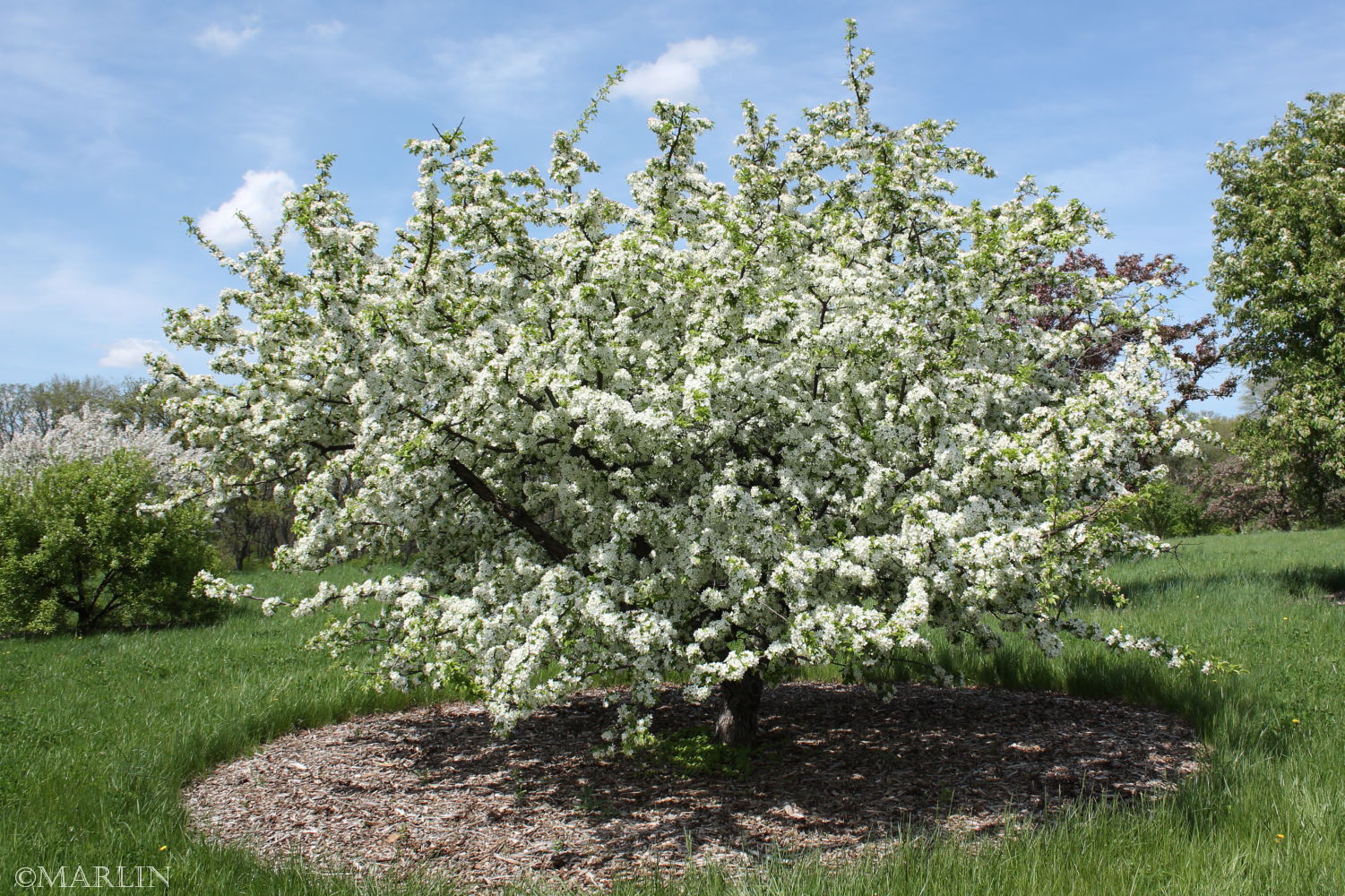Toringo Crabapple – Malus sieboldii
 Toringo Crabapple – Malus sieboldii, from planting, is 21 years old
Toringo Crabapple – Malus sieboldii, from planting, is 21 years old
Malus sieboldii, commonly called Toringo crabapple or Siebold’s crabapple, is sometimes considered to have three varieties: M. sieboldii var. sieboldii (the true Siebold’s crabapple), M. sieboldii var. sargentii, which is sometimes considered to be a separate species, and M. sieboldii var. zumi.
Crabapples are best grown in a sunny location with good air circulation and have no particular soil preferences, except soil should be well-drained. Root pruned trees transplant most easily. Tree size, flower color, fruit color, and growth and branching habit vary considerably with the cultivar grown but many grow about 20 feet tall and wide. A few Crabapples have good fall color and double-flowered types hold blossoms longer than single-flowered cultivars. Some Crabapples are alternate bearers, blooming heavily only every other year. Crabapples are grown for their showy flowers and attractive, brightly colored fruit. [1]
Plants are used for specimens, patios (small-fruiting types), and along streets to create a warm glow of color each spring. Most are attractive during the summer, bearing glossy green foliage. Popular around overhead power lines due to their small stature, a row of Crabapples along each side of the street or median strip can make a neighborhood.
References
1. USDA National Forest Service Fact Sheet 393, Malus x ‘Mary Potter’
2. Toringo Crabapple, Morton Arboretum acc. 368-88-1, photos by Bruce Marlin
3. Morton Arboretum Crabapples For The Home Landscape
